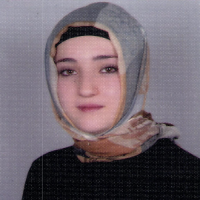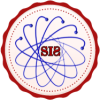Research Article
Aim & Scope
SDU Healthcare Management Journal is the publication of Süleyman Demirel University, Faculty of Economics and Administrative Sciences, Department of Health Management.
SDU Healthcare Management Journal has started its publication life for various purposes, especially to follow national and international developments in the field of health management, to include academic publications focused on health management, and to create a qualified and up-to-date resource on the field.
SDU Healthcare Management Journal is a peer-reviewed periodical published twice a year.
SDU Healthcare Management Journal accepts research articles, review articles and case reports prepared in Turkish or English on all subjects related to healthcare management.
The journal is published twice a year, in June and December.
Evaluation fee and application fee are not collected from the articles sent to the journal.
The scope of scientific articles in Turkish and English in the type of research, compilation, observation and opinion, statement, report, translation and announcement published in the field of health management by SDU Healthcare Management Journal can be listed as follows:
health services and health institutions management,
health policy and planning,
health economics,
human resources management in health institutions,
marketing, production, financing and quality management in health services,
hospital management,
accounting finance in health institutions,
health law,
public health and epidemiology.
The articles submitted for publication in the Journal should be prepared in accordance with the rules of research and publication ethics. In terms of publication ethics SDU Healthcare Management Journal pursues the principles, standards and recommendations of the publication ethics determined by COPE (Committee on Publication Ethics) and ICMJE (International Committee of Medical Journal Editors). The articles that are sent to the Journal are going to be scanned thought the iThenticate or the Turnitin plagiarism program. SDU Healthcare Management Journal is a journal that adopts open access policy. All the papers published in the Journal are licensed by Creative Commons Attribution 4.0 International license (CC BY 4.0). The opinions in articles published in the journal are not the views of the journal. All responsibility belongs to the authors. The journal does not pay any royalties to authors.
Author Guidelines
Author Guidelines
1. Articles should be prepared in accordance with the template and uploaded to the system. The template can be accessed from the information authors tab.
2. The length of the articles should not exceed 30 pages in journal format and should be prepared in "Office Word" program in A4 size.
3. Page margins should be as follows: Left: 4 cm and Right: 2,5 Top: 3 cm, Bottom: 3 cm, cm.
4. The article should be written with “Times New Roman”, 11pt size and single spacing. There should be one space after points and commas.
5. No indents should be used for the paragraphs and 6pt spaces should be left before and after the paragraphs. Between the paragraphs no extra blank lines should be used.
6. On the first page of the article, there should be an 11pt Turkish and English title, a 9pt Turkish and English summary not exceeding 150 words, and should be a minimum of 3 - a maximum of 5 Turkish and English keywords.
7. The title, name and surname of the author should be written in 10pt, below the article title. On the same page, the place of duty and e-mail address of the author should be shown in 8 pt below the cut line reserved for footnotes.
8. The headings and subheadings should be appeared bold and left justified and also numbered decimally such as 1., 1.1., 1.1.1., 1.1.2., 1.1.2.1. All the letters in main headings should be capital; only the first letters of the words in the sub-headings should be capital. Headings should be divided up to a maximum of 4 levels. One line space should be left before the main headings, and no space should be left after the heading. No spacing should be made before and after the sub-headings.
9. All the tables and figures in the article should be given in a sequentially numbered manner at centered and in their proper places. Each table, figure or graphic should be given a title. The titles should be above the Tables and Figures, should be centered, 10 pt., and only the initial letters should be capital. The text in tables, figures and graphics should be between 8-10 points. Tables, figures or graphics should be easily readable and should conform to the page structure (not exceeding the page margins) given above.
10. The following rules will be taken into account in the applications to be sent to the journal.
11. Intext citations, footnotes and reference lists in the papers should be prepared according to American Psychological Association (APA 7) style. The intext references should be given with author-date-page method.
12. Intext citations should include the surname of the author(s), year of the source, and page number, respectively. In the articles written by 2 authors, between the names of the authors “and” should be preferred in articles written in Turkish while “&” should be preferred in English articles. When referring an articles that are written by 3 or more authors, the surname of the first authors should be written first, and then “vd.” should be used in Turkish articles; “et al.” should be used in English articles.
Works by a single author: (Eke, 2019, p. 35).
Works by 2 authors: (İzgüden & Kalender, 2018, p. 12).
Works by 3 or more authors: (Çarıkçı et al., 2020, p. 55).
Citing more than one source: (Parkin, 1934, p. 25; Lopez, 2012, p. 76; Kişi & Eroymak, 2018, p. 60).
Citing whole source: (Karatay, 2003).
Reference to secondary sources: (Freud, 1901, as cited in Bonomi, 1998)
13. If a group including author abbreviations is used, while no abbreviation is used for the first reference, for the following references abbreviations are used. For those groups having no abbreviation, there is no difference between the first and the following references.
First reference: (Süleyman Demirel University [SDÜ], 2022).
Following references to a group including author name abbreviation: (SDÜ, 2022).
14. If the reference is taken from a web site and the author is known, reference should be made like periodic publications. If the date of the downloaded source is not given, access date should be used. If the date of the downloaded source is not given, date of access should be used. Also if no publisher name is available, use the name of website and data of Access.
If the author’s name and publication year is known: (Metin & Yiğit, 2021).
If the author’s name and publication year is not known: (Rekabet Kurumu, 2008).
15. If you are citing more than one work by the same author in the same year, put the letters a, b, c next to the year.
(Hoffman, 1999a, p. 30).
(Hoffman, 1999b, p. 45).
16. In narrative references in which the name of the author is written in the sentence, if the study has 2 authors “ve” should be used in Turkish articles; “and” should be used in English articles. In the studies written by 3 or more authors, first the surname of the first author should be written, then “vd.” and “et al.” should be used in Turkish and English articles, respectively.
According to Eke (2017, p. 36), ……
İzgüden and Kalender (2021) ……
Çarıkçı et al. (2009) ……
In the articles, all kind of sources should be included in the References part. All the sources, without discriminating according to the type (thesis, book, article, report etc.), should be sorted alphabetically according to the surname of the authors. The studies of a particular author should be sorted in the References part from the oldest to the newest. Sources should be left justified in the first line, and 1.25 cm tabbed from left in the following lines. For that purpose, in the paragraph preferences “first line” should be adjusted to “hanging” and the value should be adjusted to 1.25 cm. In the References part, the first letter of the name of all publications (article title, book title, chapter title, thesis title etc.) except Journal title should be capital, and the rest of the title should be lower case, ,if they are not proper name or abbreviation. For the title of a journal, the fist letters of all words should be capital. In those studies, written by 2 or more authors, “ve” should be used before the last author in Turkish articles while “comma” and “&” should be used in English articles.
The reference page should be prepared according to example shown below.
Books:
Surname, First letter of the name of the author(s). (Year). Name of the book (Number of editions). Publisher.
Koçel, T. (2020). İşletme Yöneticiliği (18th ed.). Beta Basım Yayım.
Acar, D., & Tetik, N. (2018). Genel muhasebe (16th ed.). Detay Yayıncılık.
Korkmaz, A., Dulupçu, M. A., Gövdere, B., & Songur, H. (2013). İnsani ücret. İGİAD Yayınları.
Translated Books:
Surname, First letter of the name of the author(s). (Year). Name of the book (Number of editions). (First letter of the translator. Surname of the translator, Trans.), Publisher, (The publishing date of the original work).
Goldacre, B. (2016). Kötü İlaç (1th ed.). (Ö. Çelikk, Trans.), Pegasus Yayınları (Original work published 2012).
Edited Books:
Surname, First letter of the name of the author(s). (Year). Section title. In First letter of the editor.
Surname of the editor (Ed.), Title of the book (Number of editions, Pages of the section), Publisher.
Eke, E. (2019). Türkiye’de dijital bağımlılığa yönelik politikalar üzerine bir betimleme. In H. H. Aygül, & E. Eke (Ed.), Dijital çocukluk ve dijital ebeveynler: Dijital nesillerin teknoloji bağımlılığı (p. 207-252). Nobel Akademik Yayıncılık.
Articles:
Surname, First letter of the name of the author(s). (Year). Title of the article. Journal title, Vol(No), Pages. http://doi.org/xx.xxxxxxxxxx
Özkul, G. (2007). Kapitalist sistemin sürükleyici aktörleri: Ekonomik teoride girişimciler. Süleyman Demirel Üniversitesi İktisadi ve İdari Bilimler Fakültesi Dergisi, 12(3), 343-366.
Tüfekci, N., & Uysal, M. (2018). Örgüt Sağlığının Hemşirelerin Örgütsel Adaletsizlik Algısına Etkisi 1. Third Sector Social Economic Review, 53(3), 740. https://doi.org/10.15659/3.sektor-sosyal-ekonomi.18.09.970
Liotta, E.M., Batra, A., Clark, J.R., Shlobin, N.A., Hoffman, S.C., Orban, Z.S., & Koralnik, I.J. (2020). Frequent neurologic manifestations and encephalopathy-associated morbidity in Covid-19 patients. Ann Clin Transl Neurol, 7: 2221-2230. https://doi.org/10.1002/acn3.51210
Thesis:
Surname, First letter of the name of the author(s). (Year). Thesis title [Master’s Thesis/ Ph.D. Dissertation]. Name of University / Institution
Eroymak, S. (2017). Alzheimer hastalığının maliyet etkilik analizi [Master’s Thesis]. Süleyman Demirel Üniversitesi.
Symposiums/Congresses:
Surname, First letter of the name of the author(s). (Year). Title of the paper. Symposiums/Congresses Name (Pages). The city where the Symposium / Congress is organised, Country.
Karaatlı, M., Demirci, N., Aksoy, E., & Ömürbek, N. (2014). Borsa performanslarının çok kriterli karar verme yöntemleri ile karşılaştırılması. 15. Uluslararası Ekonometri, Yöneylem Araştırması ve İstatistik Sempozyumu (p. 673-689). Isparta, Turkey.
Research Reports:
Surname, First letter of the name of the author(s). (Year). Title of the paper (Report No. xxx). Publisher. Internet address
Eliasson, G., Fölster, S., Lindberg, T., Pousette, T., & Taymaz, E. (1990). The knowledge based information economy (IUI Working Paper No. 256). Research Institute of Industrial Economics. https://www.econstor.eu/bitstream/10419/95060/1/wp256.pdf
Media Sources (Film/Video et al.):
Surname of the Producer / Speaker, First letter of her/his name. (Year). The name of the film/speak [Film / Video / Audible]. Production company. Internet Address (if any)
Anadol, R. (2020, July). Makine zekası çağında sanat [Video]. TED Conferences. https://www.ted.com/talks/refik_anadol_art_in_the_age_of_machine_intelligence?language=tr#t-931
Forman. M. (Yönetmen). (1975). One flew over the cuckoo’s nest [Film]. United Artists.
Law/Regulation/International Convention/Court Orders:
Name of Law/Regulation/International Convention/Court. (Release Date). Internet Address.
Çocuk Hakları Sözleşmesi. (1995, January 27). https://www.resmigazete.gov.tr/arsiv/22184.pdf
Lisansüstü Eğitim ve Öğretim Yönetmeliği. (2016, April 20). http://www.resmigazete.gov.tr/eskiler/2016/04/20160420-16.htm
Internet Sources:
Surname, First letter of the name of the author(s). (Date of publication / Date of access). Title. Retrieved ….. from URL
Bebbington, J., & Song, E. (2004). The adoption of IFRS in the EU and New Zealand. Retrieved July 14, 2008 from http://www.europe.canterbury.ac.nz/
Rekabet Kurumu. (2010). Rekabet hukukunun esasları. Retrieved March 17, 2010 from http://www.rekabet.gov.tr/index.php?Sayfa=sayfaicerik&icId=53
Süleyman Demirel Üniversitesi. (2020). Misyon & vizyon. Retrieved January 10, 2020 from https://w3.sdu.edu.tr/sayfa/5528/misyon-vizyon
Gökçe, D. (2019, July 19). Çin'de 1992'den bu yana en düşük büyüme. Akşam. Retrieved January 15, 2020 from https://www.aksam.com.tr/yazarlar/deniz-gokce/cinde-1992den-bu-c2yana-en-dusuk-buyume/haber-990522
For the cases not mentioned in spelling, scientific publication rules will be taken into consideration.
Ethical Principles and Publication Policy
SDU Health Management Journal observes the publication ethics principles, standards and recommendations determined by COPE (Committee on Publication Ethics) and ICMJE (International Committee of Medical Journal Editors) regarding publication ethics. Accordingly, all articles that do not comply with the accepted ethical standards are removed from publication. Articles that contain possible irregularities and inappropriateness detected after publication are also included in this. Within the scope of publication ethics, all stakeholders are expected to bear the following ethical responsibilities in summary, and all ethical cases will be evaluated in accordance with COPE rules.
Ethical Responsibilities of Authors:
Authors should not have published or sent the articles they submit to the journal elsewhere.
Authors should have cited all citations they use in their articles.
Authors declare that the article is their own work, that they have not committed any plagiarism, that all responsibilities arising from plagiarism belong to them, and that the journal has no responsibility in this regard.
Authors should guarantee that they have made scientific contributions to the article, and it should be known that all authors have equal responsibility for the article.
The corresponding author must ensure that all co-authors mentioned in the article agree to the publication and to be named as co-authors. All individuals who have made significant contributions to the work should be named as co-authors. Other individuals should be included in the acknowledgments section.
Authors are responsible for declaring the organizations, financial sources, or conflicts of interest that support the work they submit.
Authors should provide access to the datasets included in the article if deemed necessary.
Ethical Responsibilities of Reviewers:
Any selected reviewer who is not qualified to review the research or who knows that it will be impossible for them to review the article quickly should notify the editor of this fact and ask to be excused from the review process.
Reviewers are responsible for keeping the articles they receive confidential and not using information obtained from the review process for personal gain.
Reviewers should not share their reports or information about the article with others and should not communicate directly with authors without the editor's permission.
Reviewers should be attentive to potential ethical issues in the article and bring them to the editor's attention. This includes any substantial similarity or overlap between the article under review and any other published work with which the reviewer has personal knowledge.
Refereeing should be done objectively. Personal criticisms of authors should not be made, and reviews should be constructive, honest, and polite.
Referees should consult the editor before accepting to review a paper in which they have a potential conflict of interest, whether competitive, collaborative, or otherwise, with any of the authors.
Ethical Responsibilities of the Editorial Board:
The editorial board is responsible for deciding which articles to publish in the journal. The editorial board that evaluates the authors' articles should evaluate them independently of race, gender, sexual orientation, religious belief, ethnicity, citizenship, or political philosophy. The decision to be made should be based on the accuracy, validity, and importance of the article and its relevance to the scope of the journal. Current legal requirements regarding libel, copyright infringement, and plagiarism should also be taken into account.
The editor or any editorial board member should not disclose information about an article to anyone other than the corresponding author, referees, potential referees, other editorial advisors, and the publisher.
Unpublished materials disclosed in a submitted article should not be used in the editor's or editorial board's own research without the author's express written permission.
Price Policy
No fee is charged for the articles sent to the journal.
Indexes
Journal Boards
Editorial Board




Owner of the Journal
Editör

Erdal Eke, Süleyman Demirel Üniversitesi İktisadi ve İdari Bilimler Fakültesi Sağlık Yönetimi Bölümünde görev yapmaktadır. Başlıca çalışma alanları sağlık politikaları, sağlık sistemleri, sağlık reformları, örgütsel reform, yönetimde dijitalleşme olup, bu alanlarda yayınları bulunmaktadır.
e-posta: erdaleke@sdu.edu.tr
Editör Yardımcıları


Merve KİŞİ,
Hacettepe Üniversitesi Sağlık İdaresi Bölümü mezunudur. Yüksek lisans ve doktora eğitimini Süleyman Demirel Üniversitesi, Sağlık Yönetimi anabilim dalında tamamlamıştır.

Kader Gerçeker, lisans eğitimini 2016-2020 yılları arasında Süleyman Demirel Üniversitesi (Türkiye) Sağlık Yönetimi Bölümü'nde aldı. 2022 yılında Süleyman Demirel Üniversitesi'nde Sağlık Yönetimi alanında yüksek lisans eğitimine başladı. 2023 yılında Artvin Çoruh Üniversitesi İşletme Fakültesi Sağlık Yönetimi Bölümünde araştırma görevlisi olarak atandı halen burada görevine ve Süleyman Demirel Üniversitesi'nde yüksek lisans eğitimine devam etmektedir. İlgi alanları eleştirel yönetim, sağlık ekonomisi ve sağlık ekonomisinde finansal sürdürülebilirlik, sağlık sektöründe insan ilişkileri, sağlık politikaları, sağlık teknolojileri ve sağlık sosyolojisidir. Ayrıca psikoloji, etik ve halk sağlığı konularıyla da ilgilenmektedir.
Kader Gerçeker received her undergraduate education at the Department of Health Management at Süleyman Demirel University (Türkiye) between 2016-2020. In 2022, she started his masters degree in Health Management at Süleyman Demirel University. In 2023, she was appointed as a research assistant to Artvin Coruh University, Faculty of Business Administration, Department of Health Management. She is still continuing his postgraduate education at Süleyman Demirel University. Her areas of interest are critical management, health economics, and financial sustainability in health economics, human relations in the health sector, health policies, health technologies, digital health and health sociology. She also has an interest in psychology, ethics, and public health.

Editorial Board
Advisory Board












